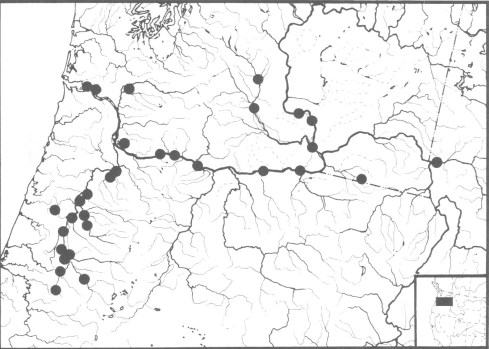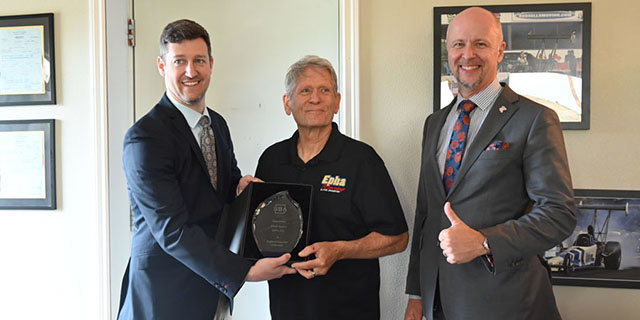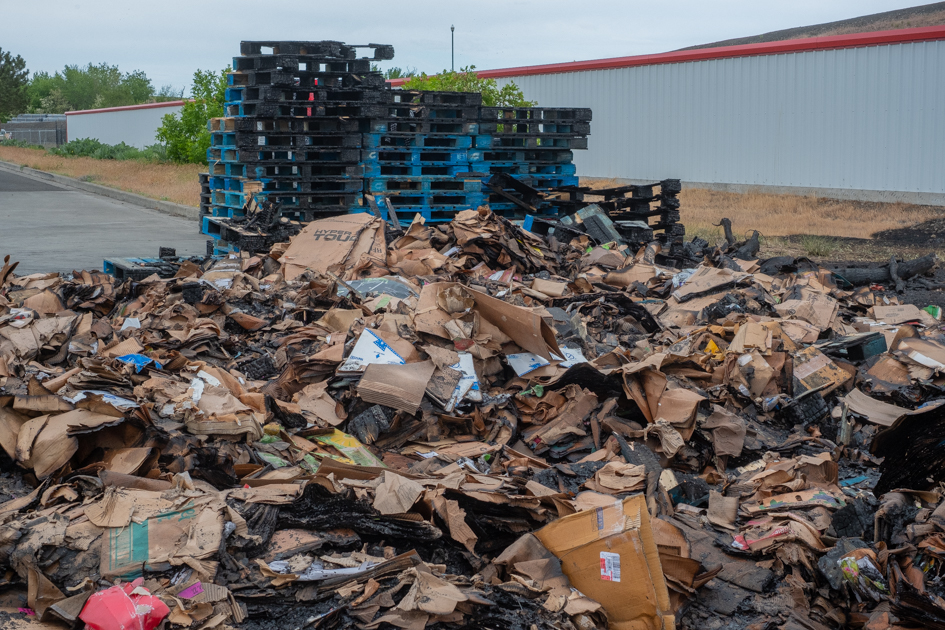The Natural World: A most peculiar fish
Published 6:02 am Tuesday, April 1, 2025
Of the 50 or so species of fish in the Columbia River basin, perhaps the oddest is the sand roller. Aptly named because of a preference for mud or sandy bottoms of large rivers, sand rollers are unlikely to reach more than 4 inches in length. What makes this chubby little fish unique is it is the only fish in Pacific Northwest waters that has ctenoid scales, an adipose fin and spines in its dorsal and anal fins.
Four main types of scales protect the bodies of fish. The most common, cycloid, are circular in shape and found on freshwater minnows, suckers, salmon, trout and whitefish. Ctenoid scales are squarish in shape, have tiny spines or comb-like teeth along their free edge, and are otherwise specific to introduced bass, perch and sunfishes. That’s a scholarly version of saying that sand roller scales are unique among native fishes found west of the Rocky Mountains.
The next piece of the sand roller’s taxonomic anomaly is the presence of an adipose fin, the small, fleshy appendage in front of the caudal fin. Recent research suggests this fin may serve as a “precaudal flow sensor” to improve a fish’s ability to maneuver in turbulent waters. Salmon, trout, whitefish and catfish are the only other freshwater fishes from the mid-Columbia that also have an adipose fin.
Similar to bass, perch and sunfish, sand rollers have spines in their dorsal and anal fins. Hence, you might argue that sand rollers are part trout and part perch, which connects their story to their kissing cousin, the trout-perch of the Great Lakes region and Canada (Percopsis omiscomaycus). This remarkable little fish is what the taxonomist David Starr Jordan described in his epic 1882 monograph, “Synopsis of Fishes of North America,” as having “the ordinary Salmonoid characters with the head and mouth of a Percoid.”
The first record of sand rollers in the Columbia River Basin was made by the naturalist Charles Eigenmann, who collected several specimens near the mouth of the Umatilla River in 1892. Prior to that time, the trout-perch was thought to be the only member of the family Percopsidae.
Following that initial finding, sand rollers were described and long recognized in genus Columbia until merged with Percopsis in 1960. The species name of sand roller, transmontana, literally means “across the mountains.” A single genus now comprises this unique family of two closely related species. The trout-perch, also known as the “sand minnow” or “grounder,” possesses weaker spines and is larger, reaching lengths up to 8 inches.
The known distribution of sand rollers is broad, ranging from 25 miles above the mouth of the Columbia River upstream to Wanapum Dam, and upstream in the Snake River to the Clearwater River. Major tributaries that contain sizable populations of sand rollers include the Cowlitz, Willamette and Yakima rivers.
Sand rollers typically mature at 2 to 3 years of age or when they reach about 3 inches in length. Spawning occurs in late spring and early summer. Stomachs from sand rollers that I collected in the Hanford Reach of the Columbia River showed they fed on midge larvae, caddisfly larvae, and crustacean zooplankton.
The noted anthropologist Eugene Hunn did not include sand rollers in his seminal list of fishes recognized by the Sahaptin-speaking tribes of the mid-Columbia region. However, evidence from 8,000-year-old archeological digs at The Dalles suggests sand roller spines were used as tribal tools long before early fur traders made iron needles available and before spiny catfish, bass and sunfishes were introduced to the Columbia River.
Sand rollers are secretive during the day, often seeking refuge in cover such as roots and undercut banks. Thought to exhibit diel periodicity, they move from deep water during sunlight hours and return to shallow water at night. While considered rare because of their crepuscular nature, estimates of sand roller abundance in the Columbia River have ranged up to 3,000 fish per square mile.
Similar to trout-perch, sand rollers have value as a forage or prey species. Studies conducted in lower Columbia River reservoirs during the 1990s by the U.S. Geological Survey indicated that sand rollers comprised up to 25% of walleye diet. Obviously, spines do not deter the crunch of hard-mouthed, nighttime-feeding walleye, which also favor three-spine stickleback on occasion.
Sand rollers are said to make good aquarium specimens, “although quite carnivorous with a preference for live food.” You are not likely to catch one on hook and line because of their small size. And unless you have been instructed in the deployment of deep-water minnow traps or you scuba dive at night, you are most apt to encounter this most peculiar fish in the stomach of an eater-size walleye.
Dennis Dauble is a retired fishery scientist, outdoor writer, presenter and educator who lives in Richland, Washington. He is the author of five award-winning books about fish and fishing. His new book, “A Rustic Cabin,” chronicles 19 years of cabin life in the Umatilla River canyon. His website is DennisDaubleBooks.com.








